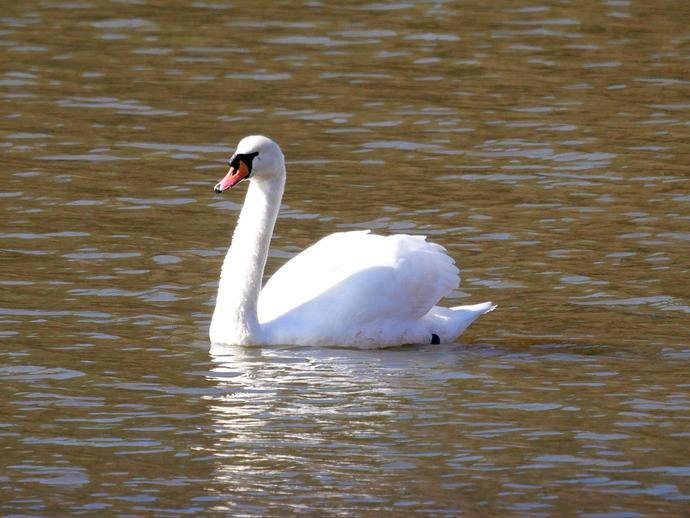February 18, 2021
It's time for the Thursday edition of #BenInNature presented by our friends at Carter Bank & Trust!
Here's another photo from December's VMNH Christmas Bird Count: a mute swan (Cygnus olor)!
Mute swans get their common name because they're much less vocal than other swan species, although they do still communicate with one another through grunts and whistles (just like some people I know!). They're native to temperate Europe and much of the Palearctic, which consists of the northern portions of Europe and Asia. However, they're also quite a common sight in North America as they've been introduced all over the U.S. and breed prolifically enough to be considered an invasive species.
These swans feed mostly on vegetation, and not only do they eat submerged aquatic plants, they also graze on plants on land. On occasion, winter flocks of mute swans will land in agricultural crops of plants such as wheat and cause a great deal of damage, partly because they're pretty large and trample the plants!
Mute swan nests are large mounds of vegetation built in shallow water, often on the edge of a lake. They generally mate for life, and the pair will reuse the same nest each year, performing repairs as needed. If you find a mute swan nest, don't get too close to it; they're very territorial and aren't afraid to attack humans. They usually hiss first, and if that doesn't drive off the potential predator, they'll smash at their enemy with bony spurs in their wings and bite with their beaks. Contrary to urban legend, a mute swan's wing is not strong enough to break an adult's leg, but getting attacked by one of these guys is still going to be a deeply unpleasant experience. It's best to enjoy their beauty from a safe distance.
ABOUT #BenInNature
Social distancing can be difficult, but it presents a great opportunity to become reacquainted with nature. In this series of posts, Administrator of Science Ben Williams ventures outdoors to record a snapshot of the unique sights that can be found in the natural world. New updates are posted Monday - Friday, with previous posts highlighted on the weekends. This series of posts is made possible thanks to the support of VMNH Corporate Partner Carter Bank & Trust (www.cbtcares.com)
NATURE PHOTO IDENTIFICATIONS
If you discover something in nature that you would like help identifying, be sure to message us right here on Facebook with a picture (please include location and date of picture) and we'll have our experts help you identify it!

 Hours & Admissions
Hours & Admissions Directions
Directions

